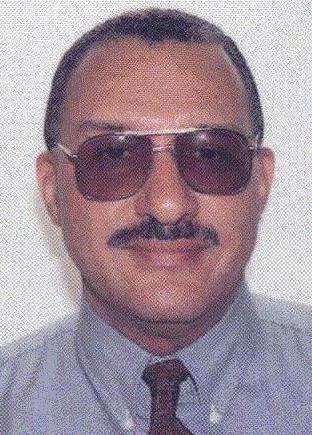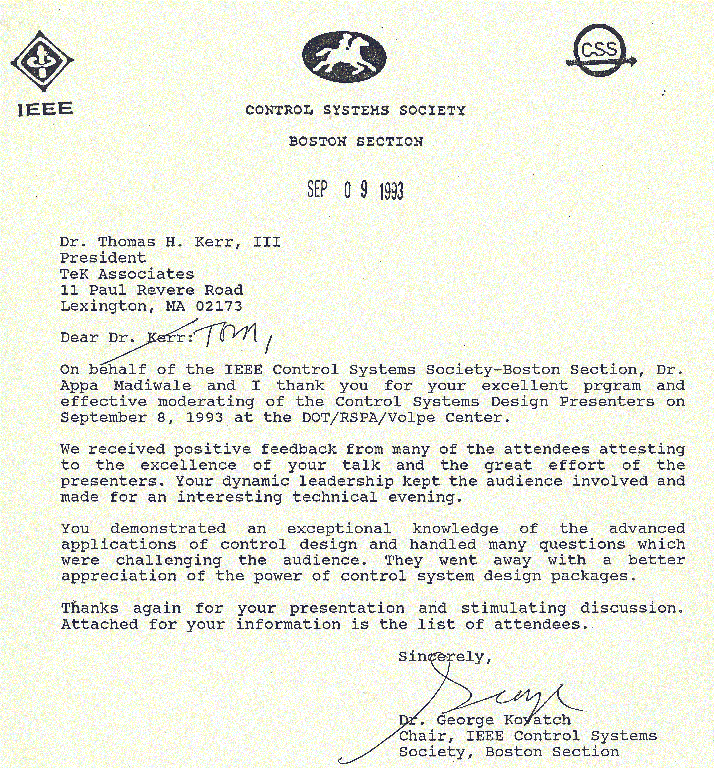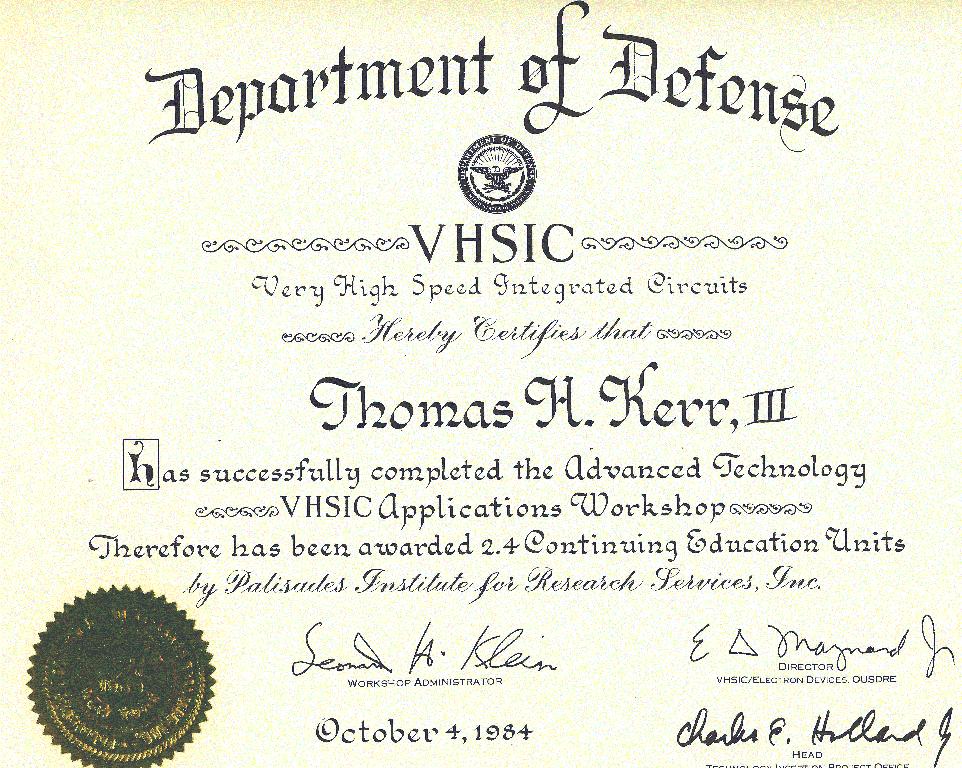|
|
(Our navigation buttons are at the TOP of each screen.)40+ years experience with software development industry & 26+ years with Graphical User Interface (GUI) design & development within a Windows PC Operating System environment. |
| We are already knowledgeable about various incremental historical versions of Visual Basic, their particular idiosyncrasies, weaknesses, or “features”; their impact, and their resolution as preferred or recommended work-around “bug” fixes. | |
| We have gone through several development cycles with these tools over the years and are aware of “what works” and “what doesn’t”. This hands-on experience is especially important regarding the efficacy of third party tools, where industry reviews in magazines that run advertisements for these same tools may be more flattering than is warranted. | |
| We remember our pain in gaining this experience and seek to spare you similar pain in your projects and endeavors. | |
| We recognize that GUI’s can be implemented in interpretive software languages and still be faster than a human’s response while numerical calculations are always to be implemented in truly compiled software languages to reap the benefit of speed and timeliness. | |
| We are cognizant of historical state-of-the-art software as well [37]-[40]. At General Electric Corporate Research & Development Center in the early 1970’s, Dr. Kerr was a protégée of his fellow coworkers: Joe Watson, Hal Moore, and Dr. Glen Roe (the degree to which this early exposure benefited him has only recently been realized by him, as that early experience continued to unexpectedly influence him over the four+ decades that ensued). |


| Experienced in development for Microsoft Windows. We know how to effectively use API’s and how to partition a large project into smaller manageable pieces by “divide-and-conquer”. | |
| We document our code so that it is easier to maintain. We understand why and appreciate the need to do so. | |
| We are multilingual in: Visual Basic (vers. 3 to 6 and some VB.NET and with other variants of the Basic language [e.g., BASICA/GW BASIC, PowerBasic]), VBA, VBScript, HTML, JAVA, JAVAScript, DV Fortran, MatLab®\Simulink® (and with PL/1 and with ASSEMBLY). | |
| Expediting software development in VB, Fortran, MatLab®, and Simulink®. We also have experience with National Instruments’ LabView® ver. 8.1, and likewise with S-Plus® Ver. 4.5 MathSoft’s S-Plus® Ver. 4.5 and Latent Gold® statistical software, with Mathsoft’s MathCad® ver. 13, with Mathematica®, and with Microsoft’s Zing® (at http://research.microsoft.com/zing); all of which we possess except for LabView®. | |
| We have some experience with The MathWork’s real-time workshop and with cross-compilers (to generate embedded code for other target machines). | |
| We have an extensive repertoire of mathematically oriented software code to draw from that has already been verified and validated. We are adept at generating new test cases when needed (as illustrated in the representative publications offered below). | |
| We have an extensive library of textbooks (and sample code) in each of the above mentioned areas. | |
| We know how to construct numerical examples to confirm proper operation of candidate code and also know how to construct counterexamples to reveal problems if certain candidate proposed algorithms don’t work because the underlying theory that supposedly supports it is flawed. We have a thirty year track record in performing these exercises in a variety of application areas. | |
| Besides knowing technological history, we also diligently follow new developments as well such as evolving software standards: DO-178B and ARINC-653. Eternal vigilance is required in order to be up-to-date. | |
| Although it is not our main bailiwick, we had historically participated in many IV&V aspects relating to multi-level security of the World Wide Military Command and Control System (WWMCCS) software, more specifically our experience pertained to the WWMCCS Improvement System (WIS) viz. [9]-[13] relating to use of coaxial cable versus triaxial cable/grounding, potential vulnerability of fiber optics links, addressed WASSO (i.e., system administrator) issues and concerns, wrote MLMR white paper on use of encryption vs. check sums, scoped initial version of overall security plan. (WWMCCS was decommissioned in 1996 and replaced by Global Command and Control System.) Familiarity with Orange-, Green-, Yellow-, and Blue- books. (Obviously, this assignment had nothing to do with Kalman filters but, never-the-less, was extremely useful to us years later regarding how to properly handle passwords, do classified processing, do classified deletes, and the how’s and why’s of enabling encryption within TeK Associates’ current TK-MIP software product. This particular experience made us cognizant of security aspects in the early 1980’s way before we later developed our own PC-based TK-MIP software so that we already knew how to enable an alternative classified mode of signal processing (with password protected user access, with encryption of critical model parameters and results, and with secure deletion of files when needed after finishing the processing and displaying of results). We understand that “Loose Lips Sink Ships!”. TeK’s updated version of this slogan is: “Low MIP’s Sink Ships!” TK-MIP’s classified mode of processing is merely “Confidential”. ) Please click on TK-MIP verion 2.0 for PC button at top of our Home Page screen to proceed to a representative free demo download of our TK-MIP software. |
![]()

[1]
Kerr, T. H., “ADA70
Steady-State Initial-Value Convergence Techniques,”
General Electric Class 2 Report, Technical Information Series No. 72 CRD095,
1972.
[2] Kerr, T. H., “A Simplified Approach to Obtaining the Steady-State Initial Conditions for Linear System Simulations,” Proceedings of the Fifth Annual Pittsburgh Conference on Modeling and Simulation, 1003 ff, 1974.
[3] Kerr, T. H., “An Invalid Norm Appearing in Control and Estimation,” IEEE Trans. on Automatic Control, Vol. 23, No. 1, pp. 73-74, Feb. 1978 (correction in No. 6, p. 1117-118, Dec. 1978).
[4] Kerr, T. H., “Three Important Matrix Inequalities Currently Impacting Control and Estimation Applications,” IEEE Trans. on Automatic Control, Vol. AC-23, No. 6, pp. 1110-1111, Dec. 1978.
[5] Kerr, T. H., “Introduction to MSM-ll Independent Verification and Validation,” Intermetrics Memo, Cambridge, MA, 30 Oct. 1981, for NADC.
[6] Kerr, T. H., “Functional and Mathematical Structural Analysis of the Passive Tracking Algorithm (PTA),” Intermetrics Report No. IR-MA-208, Cambridge, MA, 25 May 1983, for NADC.
[7] Kerr, T. H., “Assessment of the Status of the Current Post-Coherrent Localization Algorithm,” Intermetrics Report No. IR-MA-319, Cambridge, MA, 31 May 1984, for NADC.
[8] Kerr, T. H., “Update to and Refinement of Aspects of Pattern Recognition Principles Used in the Missile Warning System (AN/AAR-47),” Intermetrics Report No. IR-MA-362, Cambridge, MA, for Honeywell Electro-Optical, Lexington, MA, 15 Sep. 1984.
[9] Kerr, T. H., “WIS System Support Contract: TEMPEST Considerations for the LANCC/SM: Interim Report,” Intermetrics Report No. IR-MA-559, for RMS Technologies, Inc., 25 Nov. 1985.
[10] Kerr, T. H., “WIS System Support Contract: Potential Vulnerability of Fiber-Optic Links,” Intermetrics Report No. IR-MA-569, for RMS Technologies, Inc., 25 Nov. 1985.
[11] Kerr, T. H., “WIS System Support Contract: Tutorial Overview/Bibliography on Security Aspects of WIS,” Intermetrics Report No. IR-MA-572, for RMS Technologies, Inc., 25 Nov. 1985.
[12] Kerr, T. H., “WIS System Support Contract: MLMR White Paper,” Intermetrics Report No. IR-MA-573, for RMS Technologies, Inc., 25 Nov. 1985.
[13] Kerr, T. H., “WIS System Support Contract: An Assessment of Security Issues of Current Concern to WASSOs and Other Members of the SCWG,” Intermetrics Report No. IR-MA-599, for RMS Technologies, Inc., 22 Jan. 1986.
[14] Kerr, T. H., “The Proper Computation of the Matrix Pseudo-Inverse and its Impact in MVRO Filtering,” IEEE Trans. on Aerospace and Electronic Systems, Vol. 21, No. 5, pp. 711-724, Sep. 1985.
[15] Kerr, T. H., “Computational Techniques for the Matrix Pseudoinverse in Minimum Variance Reduced-Order Filtering and Control,” in Control and Dynamic Systems-Advances in Theory and Applications, Vol. XXVIII: Advances in Algorithms and computational Techniques for Dynamic Control Systems, Part 1 of 3, C. T. Leondes (Ed.), Academic Press, N.Y., 1988.
[16] Therrien, C. W., and Kerr, T. H., “Results of 2-D Spectrum and Correlation Analysis,” Group Memo No. 95.3155, MIT Lincoln Laboratory, Lexington, MA, 8 Sep. 1987.
[17] Kerr, T. H., Kaufman, J., “Satellite Survivability: 3-D Geometric Update to the prior 2-D Analysis of Bearings-Only Target Triangulation-Further Gauging the Deleterious Impact of Satellite Navigation/Attitude Uncertainties on Required Operational Performance,” Group Memo No. 95.3560, MIT Lincoln Laboratory, Lexington, MA, 30 Mar. 1988.
[18] Kerr, T. H., “The Principal Minor Test for Semidefinite Matrices-Author’s Reply,” AIAA Journal of Guidance, Control, and Dynamics, Vol. 13, No. 3, p. 767, Sep.-Oct. 1989.
[19] Kerr, T. H., “An Analytic Example of a Schweppe Likelihood Ratio Detector,” IEEE Trans. on Aerospace and Electronic Systems, Vol. 25, No. 4, pp. 545-558, Jul. 1989.
[22]
Kerr, T. H., “Rationale
for Monte-Carlo Simulator Design to Support Multichannel Spectral Estimation
and/or Kalman Filter Performance Testing and Software Validation/Verification
Using Closed-Form Test Cases,” MIT
Lincoln Laboratory Report No. PA-512, Lexington, MA, 22 Dec. 1989 (BSD).
[23] Kerr, T. H., “A Constructive Use of Idempotent Matrices to Validate Linear Systems Analysis Software,” IEEE Trans. on Aerospace and Electronic Systems, Vol. 26, No. 6, pp. 935-952, Nov. 1990 (minor correction in Nov. 1991 issue).
[24] Kerr, T. H., “Multichannel Shaping Filter Formulations for Vector Random Process Modeling Using Matrix Spectral Factorization,” MIT Lincoln Laboratory Report No. PA-500, Lexington, MA, 27 Mar. 1989 (BSD).
[25]
Kerr, T. H., “Streamlining
Measurement Iteration for EKF Target Tracking,”
IEEE
Transactions on Aerospace and Electronic Systems, Vol. 27, No. 2, March 1991
(minor correction appears in Nov. 1991 issue).
[26]
Kerr, T. H.,
“Numerical
Approximations and Other Structural Issues in Practical Implementations of
Kalman Filtering,”
last chapter in Approximate Kalman Filtering, edited by Guanrong Chen,
1993.
[27] Kerr, T. H.,
“Emulating
Random Process Target Statistics (using MSF),”
IEEE Trans.
on Aerospace and Electronic Systems, Vol. 30,
No. 2, pp. 556-577, Apr. 1994.
[28] Kerr, T. H., “Use of GPS/INS in the Design of Airborne Multisensor Data Collection Missions (for Tuning NN-based ATR algorithms),” the Institute of Navigation Proceedings of GPS-94, Salt Lake City, UT, pp. 1173-1188, 20-23 Sep. 1994.
[29] Kerr, T. H., and Satz, H., S., “Applications of Some Explicit Formulas for the Matrix Exponential in Linear Systems Software Validation,” Proceedings of 16th Digital Avionics System Conference, Vol. I, pp. 1.4-9 to 1.4-20, Irvine, CA, 26-30 Oct. 1997.
[30] Kerr, T. H., “Critique of Some Neural Network Architectures and Claims for Control and Estimation,” IEEE Transactions on Aerospace and Electronic Systems, Vol. AES-34, No. 2, pp. 406-419, Apr. 1998.
[33] Kerr, T. H., “Exact Methodology for Testing Linear System Software Using Idempotent Matrices and Other Closed-Form Analytic Results,” Proceedings of SPIE, Session 4473: Tracking Small Targets, pp. 142-168, San Diego, CA, 29 July-3 Aug. 2001 (contains more sections than [29]).
[34] Kerr, T. H., “Comments on ‘Determining if Two Solid Ellipsoids Intersect’,” AIAA Journal of Guidance, Control, and Dynamics, Vol. 28, No. 1, pp. 189-190, Jan.-Feb. 2005.
[35] Roe, G. M., Pseudorandom Sequences for the Determination of System Response Characteristics: Sampled Data Systems, General Electric Research and Development Center Class 1 Report No. 63-RL-3341E, Schenectady, NY, June 1963.
[36] Watson, J. M. (Editor), Technical Computations State-Of-The-Art by Computations Technology Workshops, General Electric Information Sciences Laboratory Research and Development Center Class 2 Report No. 68-G-021, Schenectady, NY, December 1968.
[37] Carter, G. K. (Editor), Computer Program Abstracts--Numerical Methods by Numerical Methods Workshop, General Electric Information Sciences Laboratory Research and Development Center Class 2 Report No. 69-G-021, Schenectady, NY, August 1969.
[38] Carter, G. K. (Editor), Computer Program Abstracts--Numerical Methods by Numerical Methods Workshop, General Electric Information Sciences Laboratory Research and Development Center Class 2 Report No. 72GEN010, Schenectady, NY, April 1972.
[39] Michael F. Hordeski, Control System Interfaces: Design and Implementation using Personal Computers, Prentice-Hall, Englewood Cliffs, NJ, 1992.
[40] Zeller, A., Why Programs Fail: A Guide to Systematic Debugging, 2nd Edition, Evelsier, Inc., Burlington, MN, 2009.
[41] Jorgensen, P. C., Modeling Software Behavior: A Craftman’s Approach, American Publications, Taylor and Francis Group, LLC, 2009.
[42] Fernandez, M., Models of Computation: An Introduction to Computability Theory, Springer, NY, 2009.
[43] Harris, A., Pro IronPython, Apress, Springer-Verlag, NY, 2009. (Source code available at http://www.apress.com) [supports Import .NET ]
[44] Kerr, T. H., “Comment on ‘Precision Free-Inertial Navigation with Gravity Compensation by an Onboard Gradiometer’,” AIAA Journal of Guidance, Control, and Dynamics, July-Aug. 2007.
[46] Developing Communications and ISR Systems Using MATLAB and Simulink.pdf
[47] Gottlieb, S., Ketcheson, D., Shu, C.-Wang, Strong Stability Preserving Runge-Kutta and Multistep Time Discretization, World Scientific, NY, 2011.
[48] Jorge A. Calvo, Scientific Programming: Numeric, Symbolic, and Graphical Computing with Maxima, Lady Stephenron Library, Newcastle on Tyre, UK, 2018.
[49] Zoe Mickley Gillenwater, Flexible Design: Creating Liquid and Elastic Layouts with CSS, New Riders, Berkley, CA, 2009. [I like what I already have!]
[50] Brendan Burns, Designing Distributed Systems: Patterns and Paradigms for Scalable, Reliable Services, 1st Edition, O'Reilly Media, Inc., Sebastopol, CA, 2018. Errata: https://www.oreilly.com/catalog/errata.csp?isbn=9781491983645
[51] 8 Books for Getting Started With Computer Vision: https://machinelearningmastery.com/computer-vision-books/
[52] James L. Melsa, Computational Programs for Computational Assistance in the Study of Linear Control Theory, McGraw-Hill, NY, 1970.
[53] Matt Phillips, Founder/President Military Java Group-Jarhead Java/ Bravo Zulu Java/ Stars & Stripes Java:
22 Sept 2006–The US military officially retires the F-14 Tomcat having been supplanted by the Boeing F/A-18E and F Super Hornets. The Grumman Tomcat is a fourth-generation, supersonic, twinjet, two-seat, variable-sweep wing fighter aircraft.
The Tomcat was developed for the US Navy’s Naval Fighter Experimental (VFX) program following the collapse of the F-111B project. The F-14 was the first of the American teen-series fighters, which were designed incorporating the experience of air combat against MiG fighters during the Vietnam War. The F-14 first flew in Dec 1970 and made its first deployment in 1974 with the US Navy aboard USS Enterprise (CVN-65), replacing the McDonnell Douglas F-4 Phantom II.
The F-14 served as the US Navy’s primary maritime air superiority fighter, fleet defense interceptor and tactical reconnaissance platform. In the 1990s, it added the Low Altitude Navigation and Targeting Infrared for Night (LANTIRN) pod system and began performing precision ground-attack missions.
I worked in the Grumman Bethpage plant back in 1974 shooting rivets into Tomcats for a year before deciding to go back to college, and this time go to class instead of spending the day in the
Rathskeller-LOL!





![]()
TeK Associates’ primary software product for the PC is TK-MIPTM, which encapsulates both historical and recent statistical estimation and Kalman filtering developments and performs the requisite signal processing intuitively, understandably, efficiently, and for easily accessible I/O results that are being sought. Go to Top
![]()
|
TeK Associates motto: "We work hard to make your job easier!" |